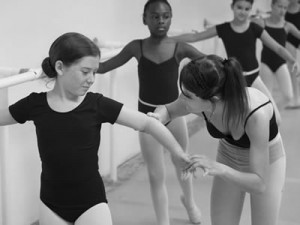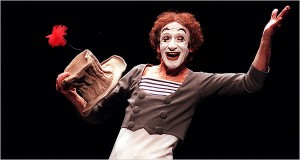Tutorial: Posing and Body Language – Part 1
Samy Fecih, a Character Animator working at Double Negative recently gave a lecture on posing and body language for animation. We’re delighted to have Samy write a series on this very topic for CG Channel readers. Enjoy!
Introduction
Some important questions animators often ask themselves are, “What is a good animation?”, “What makes a good movement?” and “What would be the perfect movement for communicating something?” We tend to use what we learned in school without going deeply into the reasons why we use them. The techniques work, but we don’t know why or how they really work. This is what this series of tutorials is about.
We’ll need to figure out first what is animation and what is movement. As humans, we communicate all day long. We communicate our ideas, reveal our inner thoughts, support our words and also express ourselves through action. If we analyze these actions from an animation point of view, you’ll see that actions are simply movements that follow one another in a sequence of: posture-movement-posture-movement.
If you look at this extract for Ricky Gervais comedy sketch, you will see how he just goes from a pose to another through a motion to express his ideas.
We’ll learn how poses are important and how a strong pose can communicate a lot. We’ll also see that blocking is all about poses that communicate what the character feels. I will try to explain what can help make a good pose or actions, what they mean, and how to use them in the next tutorial. In this tutorial, we’ll look at the Nature of Actions.
Part 1: Nature of Actions
Before figuring how to make a good pose, we need to find out WHY we want to make this pose. What is it that makes some acting incredible while some others very cliché or weak? For this, we need to learn the true nature of the actions we are using and define our character, taking these actions and revealing the inner thoughts, the background, or the social group of the character.
Here are the main Natures of Actions we do every day.
Inborn Actions
Inborn Actions are primitive and instinctive. When we are born, our body already has information, mainly instinctive, that we use without knowing how or why. When a baby boy is born, he is brought to his mother’s breast to feed. The baby doesn’t know what is food, what is a mother, or even what are humans. He doesn’t have sight yet, but he knows that he has to suckle the breast to get food and live. Almost all baby actions are Inborn Actions. If you take, for example, a baby that is born blind and deaf, he/she will still laugh and smile even though the baby never saw or heard a smile.


Discovered Actions
Discovered Actions are developed as we discover our body and our environment. For example, when we cross our arms it helps to keep our body warm, can rest our arms or even protect us. Everywhere in the world people cross their arms, not always the same way, but for the same reasons. To salute, people show their palm, putting their defense down to show no threat to the people they are saluting to. A big part of human sexuality is also discovery.

Absorbed Actions
Absorbed Actions are those that mimic or copy another person’s actions. As we grow up and we try to fit in to society, we tend to mimic people around us. A lot of the time, this mimicry is not on purpose. We start to talk like someone, using their same words or the same way they walk without noticing it. For example, kids may laugh like their parents. Another example is smoking, which many people start by trying to fit into a group and eventually it becomes a habit.

Trained Actions
Trained Actions are actions that have been taught and that need practice to be achieved. For example, when you learn to dance we are taught the movements and need to practice them. In a social etiquette class, we might learn how to stand or eat in a respectful manner using cutlery a particular way. These are trained actions.

Mixed Actions
Some actions fit into more than one of the above categories, they are mixed. For example, laughing is a primitive inborn action but it is influenced also by other factors. A laugh can be absorbed as we change our laugh from mimicking others, or even trained as in the case of clowns. In the case of trained actions, we first learn the action but then we try to push further by discovering things and incorporating this into our actions.

Book reference : People Watching by Desmond Morris
 About Samy Fecih, Character Animator, Double Negative
About Samy Fecih, Character Animator, Double Negative
Samy Fecih learned animation at Animation Mentor. While still at school, he worked at Teamto on a TV series and then went on to work at Attitude Studio on the film “9”. He moved to London, working at Framestore on projects such as Prince Caspian, The Tales of Despereaux, Where the Wild Things Are and Avatar. Samy is a Character Animator at Double Negative, where he worked on The Sorcerer’s Apprentice and Ironman 2. Samy started teaching in 2009 and, with two friends, created the event “Bring Your Own Animation” in London and Paris, where students and professionals can bring their work and get feedback from senior, professional animators.
